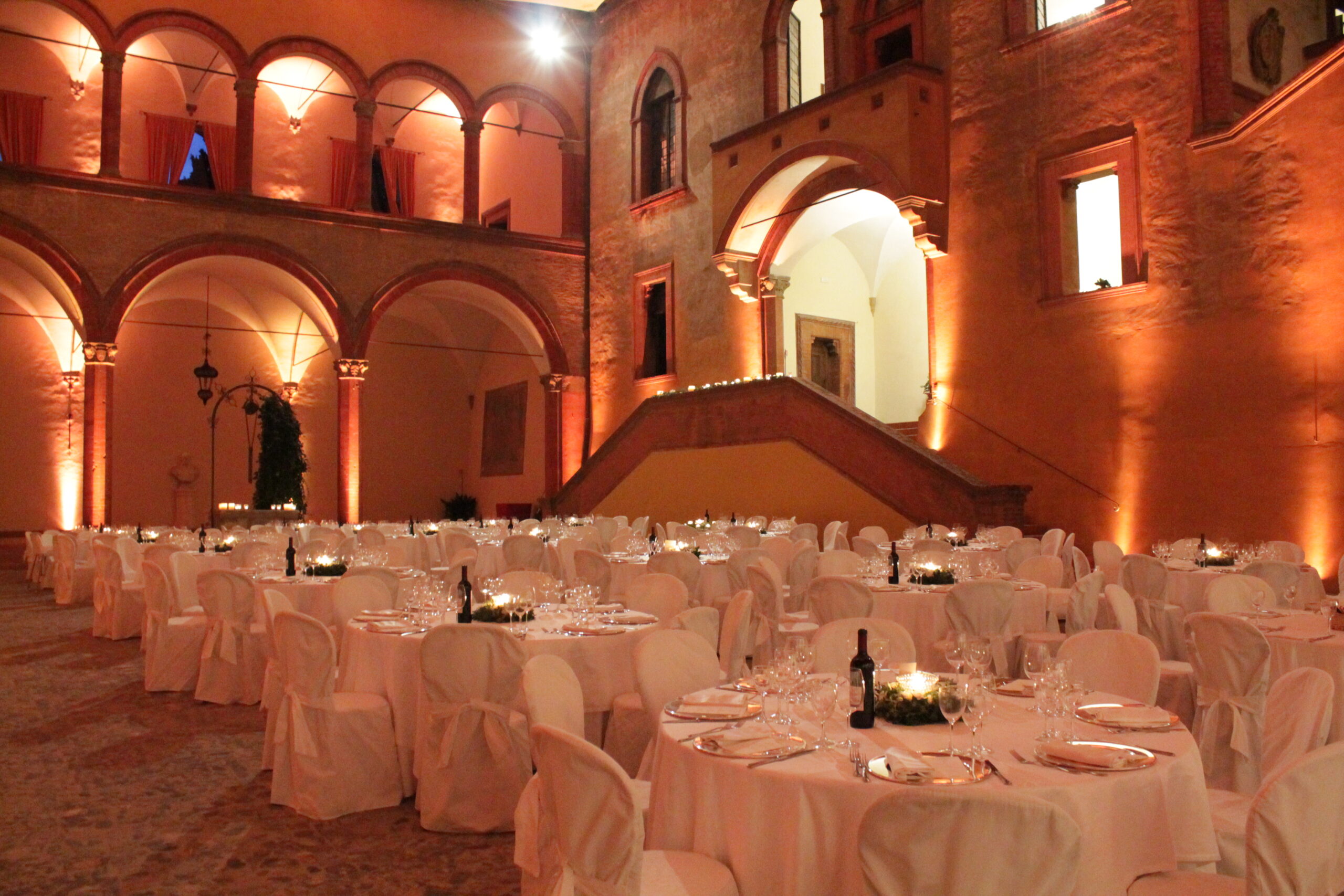Wednesday, Sept. 21st, 2022
Gala Dinner venue: Palazzo de Rossi, 30 minutes drive from downtown Bologna
Bus service will be arranged for the guests – detailed information will be provided
IMPORTANT NOTICE: in compliance with the Law Decree currently in force, ONLY people EQUIPPED WITH FFP2 MASKS will be allowed to board the buses
How to book the gala dinner:
It will be possible to purchase the social dinner tour on-site only.
Please visit the “New Registrations” desk at the workshop venue (registrations open on September 19 at 13:30)
Payments by credit card only; cash, checks and bank transfers will not be accepted.
Immersed in the Reno Valley in Pontecchio Marconi, between protected natural areas and close to two important routes, the Via della Seta and the Via degli Dei, is the suggestive Palazzo De Rossi, a magnificent dwelling of the late fifteenth century perfectly preserved thanks to the care of the owners: the noble family Bevilacqua Ariosti.
The interior of the building, through paintings, frescoes and bas-reliefs, tells the story of the Rossi family and its relations with illustrious personalities of the time, the traditions that developed here and the architectural evolution of the castle itself.
In the second half of the 15th century, Bartolomeo de’ Rossi, a banker and senator from Parma, decided to build a sumptuous residence in Pontecchio that could accommodate nobles, artists, intellectuals and clerics visiting Bologna.
Among the most illustrious guests it hosted the writer Torquato Tasso and Pope Julius II.
Since then, despite having undergone several modifications, the Palazzo still retains its majestic and elegant nature, remaining the ideal place for unforgettable events in the magical atmosphere of Courts of the past.
Bartolomeo de’ Rossi was very careful when choosing the location where his sumptuous mansion would be built. Here, ladies, pages and knights were to pass many a pleasurable hours relaxing and enjoying the wonderful country life, away from the sufferings of wars.
The perfect location was in the valley just beyond the walls of Bologna by the banks of the river Reno. Rich arable land at the foot of the Apennine mountains and the steep chalky slopes so often depicted by Bolognese artists formed the perfect backdrop.
The castle was built on two levels allowing one area to be bathed in light and the other more shaded and cools. The small distance from the Reno canal ensured a plentiful water supply for both the castle and the village that grew up near by.
The castle and the village were self-sufficient and had everything they needed: plentiful harvests, fisheries, mills, stables, barns, fruit trees and sawmills. The inhabitants worked the land and did everything possible to ensure its upkeep.



























